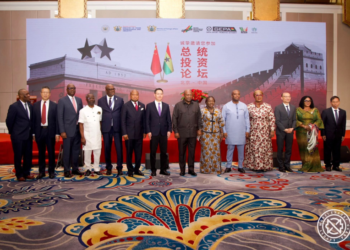The global economy is projected to maintain a stable yet subdued growth trajectory in the coming years, according to the January 2025 World Economic Outlook Update by the International Monetary Fund (IMF).
With growth forecasts at 3.3% for both 2025 and 2026, the global economy remains below the historical average of 3.7% recorded between 2000 and 2019. However, while the overall outlook remains steady, significant disparities exist across regions, reflecting a precarious growth profile.
Meanwhile, divergent growth rate are to be experienced across the world. The United States is expected to record a growth rate of 2.7% in 2025, 0.5 percentage points higher than the IMF’s October 2024 forecast. This upward revision reflects robust demand supported by strong wealth effects, a less restrictive monetary policy, and favorable financial conditions. Accelerating investment and a resilient labor market further bolster the outlook, though growth is anticipated to taper toward potential levels by 2026.
Growth in the euro area is projected at 1.0% in 2025, marking a 0.2 percentage point downward revision from the October 2024 forecast. The region’s economic momentum remains hampered by weak manufacturing activity, ongoing geopolitical tensions, and heightened political and policy uncertainties. However, growth is expected to improve to 1.4% in 2026, supported by stronger domestic demand as financial conditions ease and confidence improves.
For other advanced economies, the IMF highlighted two opposing forces shaping growth. Recovering real incomes are expected to support consumption, while heightened trade policy uncertainties act as a drag on investment. These dynamics are likely to keep growth forecasts relatively stable over the medium term.
Emerging Markets and Developing Economies
In emerging markets and developing economies, growth in 2025 and 2026 is expected to align closely with 2024 levels.
China’s growth forecast for 2025 has been revised upward by 0.1 percentage points to 4.6%, driven by carryover effects from 2024 and a fiscal package announced in November 2024. These measures are expected to counterbalance the negative impacts of trade policy uncertainties and a sluggish property market. Growth in 2026 is projected at 4.5%, as trade-related uncertainties subside and labor market adjustments, including an increased retirement age, stabilize.
A notable exception to the muted global growth narrative is sub-Saharan Africa, where economic growth is forecast to pick up in 2025. This improvement is expected despite a slowdown in emerging and developing Europe, highlighting the resilience of the African region. While the report does not detail specific country projections, the positive outlook for sub-Saharan Africa aligns with broader trends of improving macroeconomic stability, rising investments, and structural reforms across the region.
The IMF’s analysis underscores the precarious nature of the global growth profile, with regions facing unique challenges and opportunities. In advanced economies, recovering consumer demand provides a silver lining, but investment remains constrained by geopolitical uncertainties and protectionist trade policies. Emerging markets, particularly in Asia and sub-Saharan Africa, demonstrate resilience, but lingering issues like trade tensions, labor market dynamics, and property sector vulnerabilities pose risks.
For sub-Saharan Africa, the anticipated growth recovery in 2025 offers a glimmer of hope amid global economic uncertainties. The region’s ability to capitalize on this momentum will depend on continued investment in key sectors, structural reforms, and policy measures to mitigate external shocks.
The global economy’s outlook for 2025 presents a mixed picture, with stable but subdued growth rates across the board. While advanced economies grapple with divergent trajectories and persistent uncertainties, emerging markets and sub-Saharan Africa show signs of resilience and potential. Policymakers will need to navigate these challenges strategically, fostering conditions that support sustainable and inclusive growth in a rapidly changing global economic landscape.
READ ALSO: SSNIT Effects 12% Pension Increment; GH₵510 Million Disbursed for January 2025























